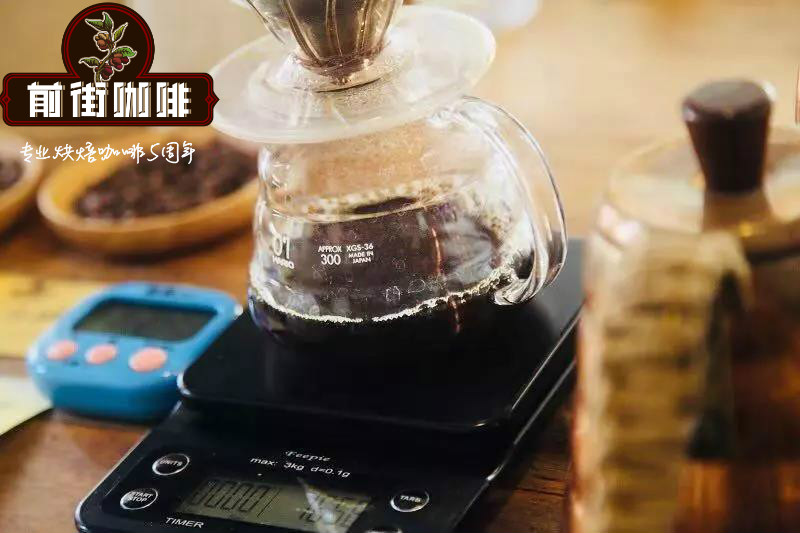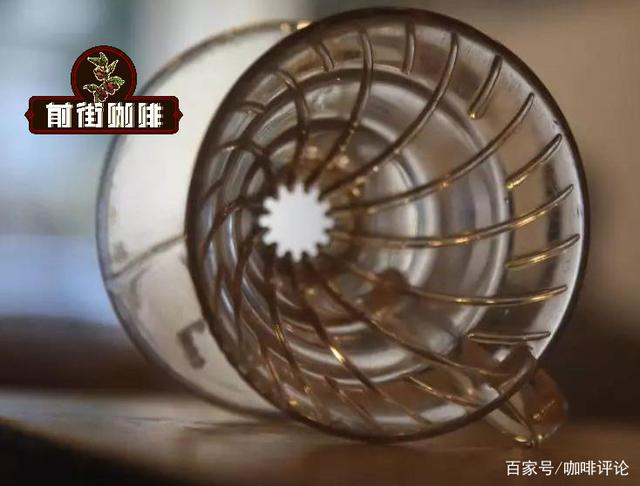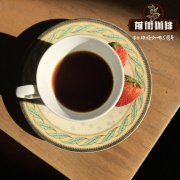The varieties of Patch Coffee introduce how to drink and brew pache Patch Coffee in Guatemala New Oriental.

Professional coffee knowledge exchange More coffee bean information Please pay attention to coffee workshop (Weixin Official Accounts cafe_style)
As a country with many volcanoes, Guatemala has unique coffee growing conditions, so the quality of coffee produced in the country is quite high. Guatemala coffee has a unique smoky flavor, which is also a major feature that distinguishes Guatemala coffee, but at the same time has a bright fruit acid and fruit aroma, which Qianjie thinks is really unreasonable without trying.

New Oriental
Rainfall is abundant, covered by clouds all year round, and the climate is similar to that of Cobain Rainforest. Formerly a volcanic area, the soil contains metamorphic rocks. The minerals in the soil are balanced by the abundance of metamorphic rocks. Coffee cultivation is also quite different from that of volcanic areas in Guatemala. New Oriental coffee grows in volcanic soils without volcanic activity during its growth.
New Oriental is Guatemala's newest coffee-growing region, characterized by aroma, pronounced acidity and good texture.
| Bean information|
Blueberry Manor can be said to be a very powerful manor in Guatemala. It won the third and fifth places in last year's COE competition ~ Patch is also quite rare. It is a natural mutant of iron pickup truck. This bean performs well in sweetness and balance ~
Pash
Pache is a variant of Guatemalan Typica found in Finca El Brito. It comes in two different forms: Pache Comum and Pache Colis. Both grow well, growing well between 3,500 and 6,500 feet above sea level. Natural mutations in Typica varieties are associated with a single gene, resulting in smaller plants (dwarfing) that can be planted more densely and yield higher yields. This variety was discovered in 1949 at Brito Farm, Santa Cruz Naranjo, Guatemala. From there to select by quality selection means selecting a group of individuals based on their superior performance, the seeds from these plants expand to form a new generation, and then repeating the process. Mass selection took place on private farms in Guatemala and spread from there to other regions and countries.

Guatemala El Morito Pache
Guatemala Blueberry Farm Patch
Country: Guatemala
Production area: New Oriental
Altitude: 1550-1800M
Treatment method: sun treatment
Grade: SHB
Breed: Pache
Front Street Coffee Recommended Brewing Method: Hand Brewing

Filter cup: Hario V60
Water temperature: 90℃
Powder water ratio: 1:15
Grinding degree: BG 6L (Chinese standard No.20 sieve pass rate 80%)
Cooking method: 28 grams of water steams for 30 seconds, water injection to 127 grams of subsection, and so on when the water level drops is about to expose the powder bed continue to water injection to 225 grams of water, water level drops is about to expose the powder bed remove the filter cup,(steams start timing) extraction time is 1 minute and 50 seconds.
Flavor: When grinding, you can smell thick nuts, spices and some slight fermented berry aromas. When hot, the entrance is balanced, with a little fermented fruity, black rice tea feeling, with nuts and almond flavor; after the temperature drops, there are citrus, berry, ripe fruit sour and sour, sucrose sweet and lasting, overall sweet and balanced.
The origami filter cup has many deep longitudinal grooves on the side and a relatively large water outlet hole at the bottom, which makes it flow faster. Moreover, the material of the origami filter cup is ceramic, so its thermal conductivity and insulation will be better. Xiaobian today is used with flat filter paper, because the bottom of the filter paper is flat, coffee powder can be evenly distributed at the bottom of the filter paper after pouring in, and the extraction will be more uniform and the water flow will be more uniform during brewing.
Parameters & Techniques
Water temperature: 89℃; medium and fine grinding (BG 5Z: 54% of the pass rate of No.20 sieve of Chinese standard); powder-water ratio 1:15;
Steaming with 36g water for 30 seconds, filling water to 125g, continuing to fill water to 227g when the water level drops and is about to expose the powder bed, removing the filter cup when the water level drops and is about to expose the powder bed. (Steaming start timing) Extraction time is 1 42"
Flavor: Light fermented aromas with creamy, berry, nutty, dried apricot and almond notes. The taste is more mellow.

| KONO filter cup|
The ribs of the KONO filter bowl are shorter and stop less than half the height of the filter bowl. This design is mainly to ensure that in the process of dripping, the filter paper can be attached to the filter cup wall after absorbing water, which makes the exhaust space of the filter cup limited, the air flow naturally limited, and the flow rate slows down, so that a large part of the coffee powder is soaked.
Parameters & Techniques
Water temperature: 89℃; medium and fine grinding (BG 6M: Chinese standard No.20 sieve pass rate 48%); powder water ratio 1:15;
Steaming with 32g water for 30 seconds, injecting water to 122g, continuing to inject water to 225g when the water level drops and is about to expose the powder bed, removing the filter cup when the water level drops and is about to expose the powder bed. (Steaming start timing) Extraction time is 1 48"
Flavor: The nose has hints of fermentation and sandalwood, soft berry fruit, cream, nuts and chocolate. The overall balance is more balanced.

| syphon pot|
The main principle of coffee extraction by siphon pot is realized by pressure difference. First, the water in the lower cup is heated to boiling, and then inserted into the upper pot, so that the lower pot presents a high pressure state. Due to the pressure difference between the lower pot and the upper pot, the hot water goes up and mixes with the coffee powder in the upper pot and extracts it. After the extraction process is over, the fire source of the lower pot is removed, so that the pressure difference between the lower pot and the upper pot is instantly reduced. The siphon between the upper pot and the lower pot will promote the coffee extract to flow back to the lower cup. If you want to speed up the coffee extract reflux, you can wipe the lower pot with a wet cloth, which will make the pressure difference between the upper and lower pots smaller and the coffee extract reflux faster.
Parameters & Techniques
Powder amount: 15g; water temperature: 88℃; medium and fine grinding (BG 6M: Chinese standard No.20 sieve pass rate 48%); powder water ratio 1:12;
Pour 183 grams of water into the lower pot. When the water temperature is 88℃, pour the coffee powder into it and stir it for ten rounds to make the coffee powder fully contact with the water. When it is soaked for 30 seconds, stir it for five rounds to increase the extraction of the coffee powder. Remove the fire source and stir it for 1 minute. (Start timing of powder addition) Extraction time is 1 20"
Flavor: It has obvious fermentation aroma, berry, dried fruit, chocolate, cream, nut, sucrose flavor, sweet feeling and balance feeling are obvious.
END
Important Notice :
前街咖啡 FrontStreet Coffee has moved to new addredd:
FrontStreet Coffee Address: 315,Donghua East Road,GuangZhou
Tel:020 38364473
- Prev

Starbucks from a single farm how to drink coffee beans from Ethiopia's Kayong Mountain Farm?
Professional coffee knowledge exchange more information on coffee beans Please follow the coffee workshop (Wechat official account cafe_style) Ethiopian coffee beans from a single farm are scarce on the market. Therefore, we are particularly honored to share this micro batch from Guji District with you. In the past, Guji was listed as the producing area of Sidamo, but although the shape and Sida of Guji coffee beans
- Next

What is cold coffee? What is cold coffee?
Professional coffee knowledge exchange More coffee bean information Please pay attention to coffee workshop (Weixin Official Accounts cafe_style) What is cold extraction coffee? What's different about iced coffee? 1. What is the difference between iced coffee and cold coffee? Simply put, iced coffee is made by cooling hot coffee and cold coffee.
Related
- Detailed explanation of Jadeite planting Land in Panamanian Jadeite Manor introduction to the grading system of Jadeite competitive bidding, Red bid, Green bid and Rose Summer
- Story of Coffee planting in Brenka region of Costa Rica Stonehenge Manor anaerobic heavy honey treatment of flavor mouth
- What's on the barrel of Blue Mountain Coffee beans?
- Can American coffee also pull flowers? How to use hot American style to pull out a good-looking pattern?
- Can you make a cold extract with coffee beans? What is the right proportion for cold-extracted coffee formula?
- Indonesian PWN Gold Mandrine Coffee Origin Features Flavor How to Chong? Mandolin coffee is American.
- A brief introduction to the flavor characteristics of Brazilian yellow bourbon coffee beans
- What is the effect of different water quality on the flavor of cold-extracted coffee? What kind of water is best for brewing coffee?
- Why do you think of Rose Summer whenever you mention Panamanian coffee?
- Introduction to the characteristics of authentic blue mountain coffee bean producing areas? What is the CIB Coffee Authority in Jamaica?

